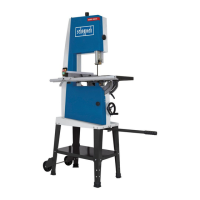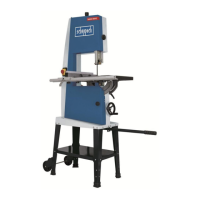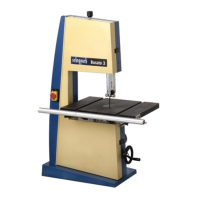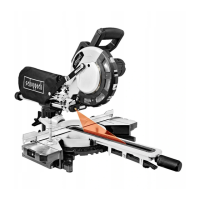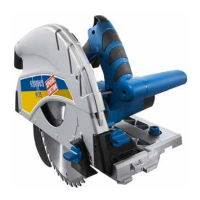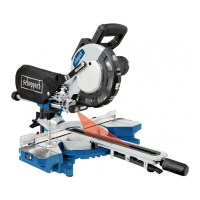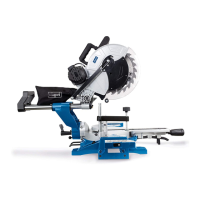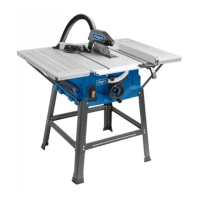30
30 GB
16. Disposal and recycling
Disposing of transport packaging
The packaging protects the machine from damage
during transport. The packaging material is usually
chosen for factors of environmental friendliness and
disposal. It can therefore be recycled. Returning the
packaging to the material life cycle saves raw mate-
rial and reduces waste.
Packaging parts (e.g. plastic sheets, Styropor®) can
be dangerous for children. Risk of choking! Store
packaging parts beyond the reach of children and
dispose of them as soon as possible.
Old devices must not be disposed of with house-
hold waste!
This symbol indicates that this product must
not be disposed of together with domestic
waste in compliance with the Directive
(2012/19/EU) pertaining to waste electrical
and electronic equipment (WEEE). This product must
be disposed of at a designated collection point.
17. Troubleshooting
Problem Possible cause Help
Motor does not work Motor, cable or plug defective, fuses burnt
Housing cover open (limit switch)
Arrange for inspection of the machine by a
specialist. Never repair the motor yourself.
Danger! Check fuses and replace as neces-
sary
Close housing cover exactly
The motor starts up
slowly and does not reach
operating speed.
Voltage too low, coils damaged, capacitor
burnt
Contact the utility provider to check the volt-
age. Arrange for inspection of the motor by
a specialist. Arrange for replacement of the
capacitor by a specialist
Motor makes excessive
noise
Coils damaged, motor defective Arrange for inspection of the motor by a
specialist
The motor does not reach
its full power.
Circuits in the network are overloaded
(lamps other motors, etc.)
Do not use any other equipment or motors on
the same circuit
Motor overheats easily. Overloading of the motor, insufcient cool-
ing of the motor
Avoid overloading the motor while cutting, re-
move dust from the motor in order to ensure
optimal cooling of the motor
Saw cut is rough or
wavy
Saw blade dull, tooth shape not appropriate
for the material thickness
Resharpen saw blade and/or use suitable
saw blade
Workpiece pulls away
and/or splinters
Excessive cutting pressure and/or saw
blade not suitable for use
Insert suitable saw blade
Saw blade is not running
straight
Guide has been wrongly set
Wrong saw blade
Set the saw blade guide according to the
operating instructions
Select a saw blade according to the operat-
ing instructions
Burn marks appear on the
wood during the cutting
work
Blunt saw blade
Wrong saw blade
Change the saw blade
Select a saw blade according to the operat-
ing instructions
Saw blade jams during
cutting work
Blunt saw blade
Deposits on the saw blade
Guide has been set poorly
Change the saw blade
Clean the saw blade
Set the saw blade guide according to the
operating instructions
This can occur, for example, by handing it in at an
authorised collecting point for the recycling of waste
electrical and electronic equipment. Improper han-
dling of waste equipment may have negative conse-
quences for the environment and human health due
to potentially hazardous substances that are often
contained in electrical and electronic equipment. By
properly disposing of this product, you are also con-
tributing to the effective use of natural resources.
You can obtain information on collection points for
waste equipment from your municipal administration,
public waste disposal authority, an authorised body
for the disposal of waste electrical and electronic
equipment or your waste disposal company.
